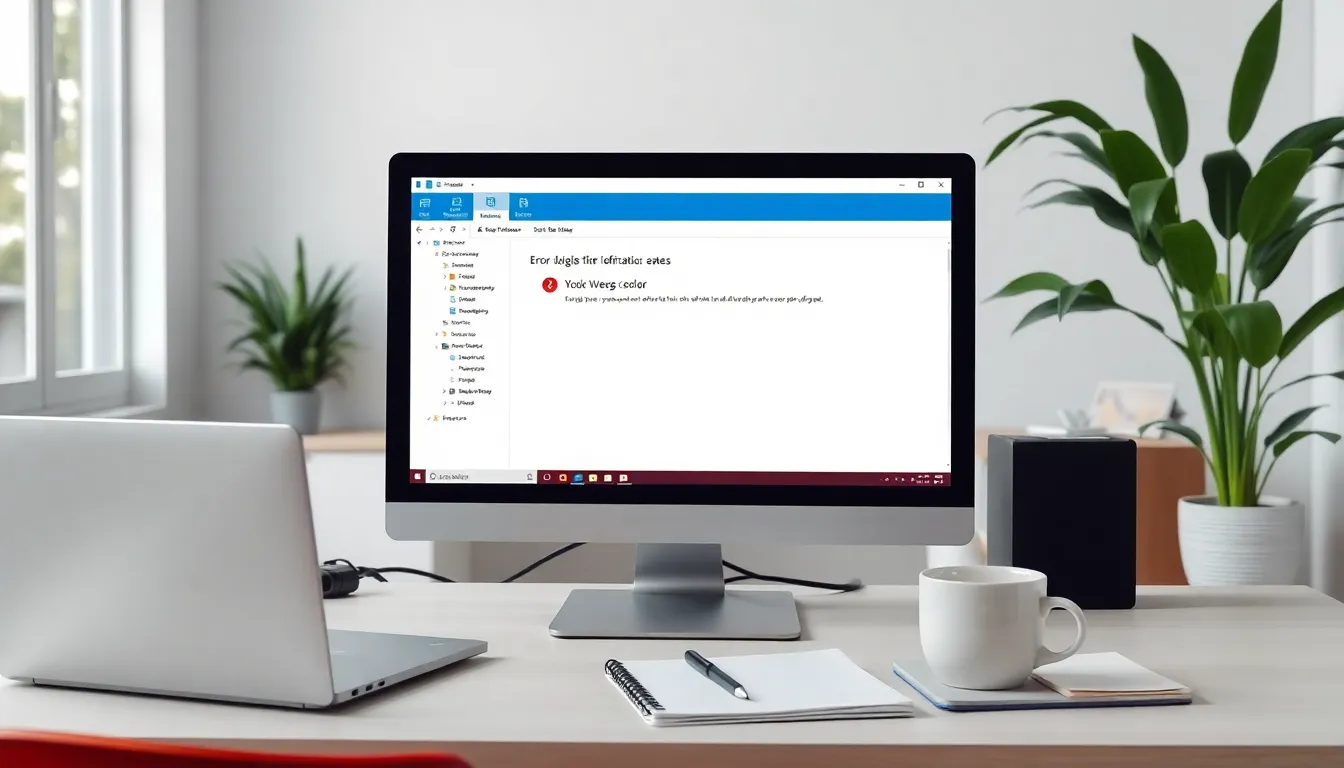Imagine this: you’re all set to dive into your favorite tasks with the Winobit 3.4 software, only to be greeted by an error message that feels like a cosmic joke. Frustrating, right? This pesky software error can turn a productive day into a comedy of errors faster than you can say “debugging.”
But fear not! Understanding the Winobit 3.4 software error is the first step toward reclaiming your digital sanity. With a little insight and a dash of humor, tackling this issue can be less of a headache and more of an adventure. Whether you’re a tech whiz or just someone trying to avoid a meltdown, this guide will help you navigate the quirks of Winobit 3.4 and get back to business—without losing your cool.
Winobit 3.4 Software Error
Users may encounter a variety of error messages while using Winobit 3.4. Understanding these errors is crucial for effective troubleshooting.
Common Causes
Incompatibility between software versions often leads to errors. Corrupt installation files frequently create significant issues. Additionally, insufficient system resources, such as memory and processing power, contribute to malfunctions. Missing or outdated drivers can also trigger unexpected alerts. Conflicts with third-party applications remain a common source of frustration. Regular updates to the software generally mitigate these problems, ensuring optimal performance.
Symptoms and Significance
Common symptoms include crashes, slow performance, and frequent error messages. Users may notice sudden application freezes during critical tasks. Inconsistent functionality within the software can disrupt workflow significantly. Recognizing these symptoms aids in identifying underlying causes quickly. Addressing errors promptly enhances overall productivity and minimizes stress. Effective resolution of these issues ensures a smoother experience with Winobit 3.4.
Troubleshooting Winobit3.4 Software Error

Users frequently encounter error messages in Winobit 3.4 that interrupt their tasks. Identifying the root issues is essential for effective troubleshooting.
Step-by-Step Guide to Resolve
- Restart the computer. This action often resolves temporary glitches.
- Check for software updates. New versions often fix known bugs.
- Uninstall and reinstall the application. A fresh installation can clear corrupt files.
- Verify system requirements. Ensure the system meets all specifications for smooth operation.
- Clear cache and temporary files. This helps restore optimal performance.
- Disable conflicting applications. Conflicts with third-party software can cause errors.
Tools to Diagnose Issues
Using the right tools can simplify the troubleshooting process.
- Event Viewer: This built-in Windows tool logs error messages and provides details about their origin.
- Reliability Monitor: It displays a timeline of application crashes and system failures for easier diagnosis.
- Task Manager: This allows users to check resource usage and identify performance issues.
- Antivirus Software: Running a thorough scan can detect malware that disrupts application functionality.
- Driver Updater: This tool can find and install the latest drivers, minimizing compatibility issues.
Utilizing these tools ensures a more detailed understanding of the software’s condition.
Preventing Future Errors
Maintaining software stability requires proactive measures. Regularly updating the Winobit 3.4 application reduces the risk of errors linked to outdated versions. Ensuring compatibility with the operating system helps mitigate potential conflicts. Keeping system resources optimized is essential; sufficient RAM and processing power can prevent crashes and slow performance.
Implementing routine maintenance strategies supports error prevention. Users should regularly check for and install driver updates to ensure proper functionality. Clear temporary files and cached data periodically to enhance software performance. Monitoring application performance through Task Manager can provide insights into system resources and potential conflicts.
Utilizing built-in diagnostic tools is important for ongoing maintenance. Event Viewer offers detailed logs that identify any recurring issues, while Reliability Monitor assesses the stability of the system. Antivirus software protects against malware that can interfere with Winobit 3.4’s operation.
Developing healthy software habits fosters a smoother user experience. Regularly backing up data ensures recovery options are available in case of failure. Documenting error messages and solutions can create a personal knowledge base for future reference. Engaging with user forums or official support channels keeps users informed about known issues and patches.
Taking these preventative steps helps minimize disruptions. Building a routine around software maintenance fosters consistent performance and user satisfaction.
Seeking Professional Help
Professional assistance often becomes necessary when troubleshooting the Winobit 3.4 software leads to unresolved issues. Users experiencing persistent errors may find value in reaching out to tech support teams or IT professionals skilled in software diagnostics. Knowledgeable technicians can quickly diagnose complex issues that typical troubleshooting steps might miss.
Many users benefit from seeking help in user forums and community groups. Sharing experiences with others who encountered similar problems can provide insights and solutions. Experts in these communities often share step-by-step fixes tailored to common Winobit 3.4 errors, enhancing the likelihood of an effective resolution.
Contracting professional services helps address the underlying causes of software errors. Technicians with extensive experience can conduct thorough system evaluations to ensure compatibility and optimize system resources. Regular maintenance checks by a professional may also uncover issues that go unnoticed by the average user.
Remote assistance options make accessing professional help easier. Tech support teams can remotely analyze and rectify problems without requiring an in-person visit. This expedites the troubleshooting process, minimizing downtime and restoring productivity.

Documentation plays a crucial role during consultations. Users should collect relevant error messages, system specifications, and steps taken prior to seeking help. Providing this information streamlines the diagnostic process, enabling professionals to focus on resolving issues.
Lastly, investing in quality tech support or managed services ensures consistent software performance. Ongoing support can prevent disruptions, helping users maintain productivity without excessive frustration.
